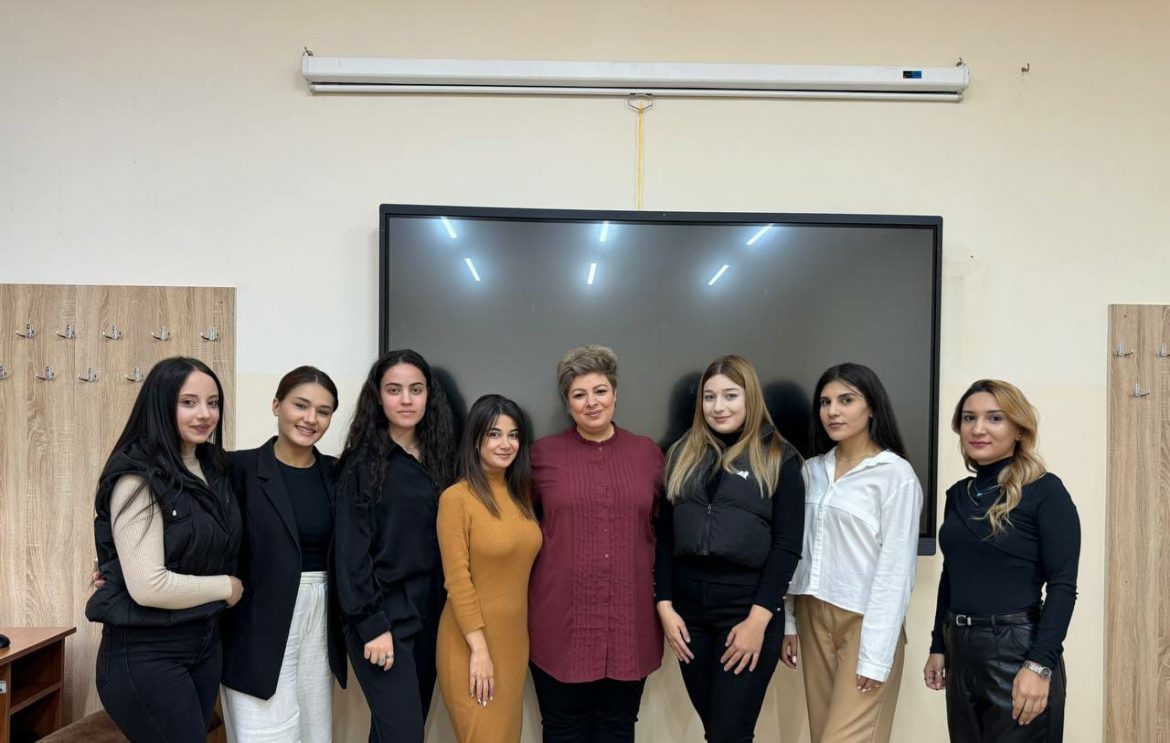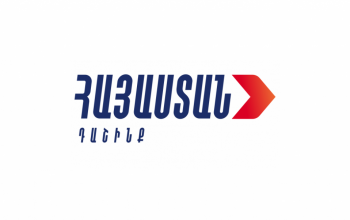By Anna Harutyunyan
“When the lecturer introduced us to our new classmates, I realized that I would quickly get used to this new environment,” said 37-year-old Svetlana Abrahamyan, a student forcibly displaced from Artsakh attending university in Armenia.
Among the 100,000 Armenians displaced from Artsakh after Azerbaijan’s September 19 military operation, 4,600 are students. Many of them have enrolled in new universities in Armenia and are gradually adapting to their new life. Yet professors and students of Artsakh State University have not forgotten the university they were forced to abandon and are demanding its restoration.
According to official data from the Armenian government, of the 4,600 students from Artsakh who can continue their studies in Armenia, 2,100 are in higher education and 2,500 in secondary vocational education. 1,600 have enrolled in state universities in Armenia, according to Public Television of Armenia. 1,086 students from Artsakh are studying at Yerevan State University, 888 of them in the same departments as their universities in Artsakh.
There were two state and two private universities in Artsakh: Artsakh State University, Shushi Technological University, Mesrop Mashtots University and “Grigor Narekatsi” University.
The September 19 attack came in the wake of Azerbaijan’s recent military assaults aimed at regaining full control over Artsakh. The military operation was preceded by a nearly 10-month-long blockade imposed by Azerbaijan on the Berdzor (Lachin) Corridor, a vital route through which Armenians received essential supplies, including medicine and fuel. Consequently, Artsakh Armenians faced severe shortages of essential supplies such as food, medicine, water and electricity. Locals described Azerbaijan’s actions as a “slow-motion genocide,” using starvation as a tactic to compel them to leave the region once the road reopened.
When the attack started, Abrahamyan’s family of seven took shelter in basements until the shooting stopped. However, when the firing resumed, they had to flee their home. As they ran away, her three-year-old cousin screamed in her brother’s arms, “Help, save us.” They didn’t know how to silence the child, worried the cries would reveal their whereabouts to Azerbaijani forces.
Abrahamyan and her family reached Armenia with great difficulty. They completed the journey from Stepanakert, Artsakh to Yerevan, Armenia, which usually takes half a day, in three days. Since they ran out of food and supplies during the siege, they only took water with them for the long journey.
Abrahamyan is the only student in her home. She studied sociology at Mesrop Mashtots University in Artsakh while working. In Armenia, her family has found a house in the Gegharkunik province, while she completes her master’s at Yerevan State University in the capital city.
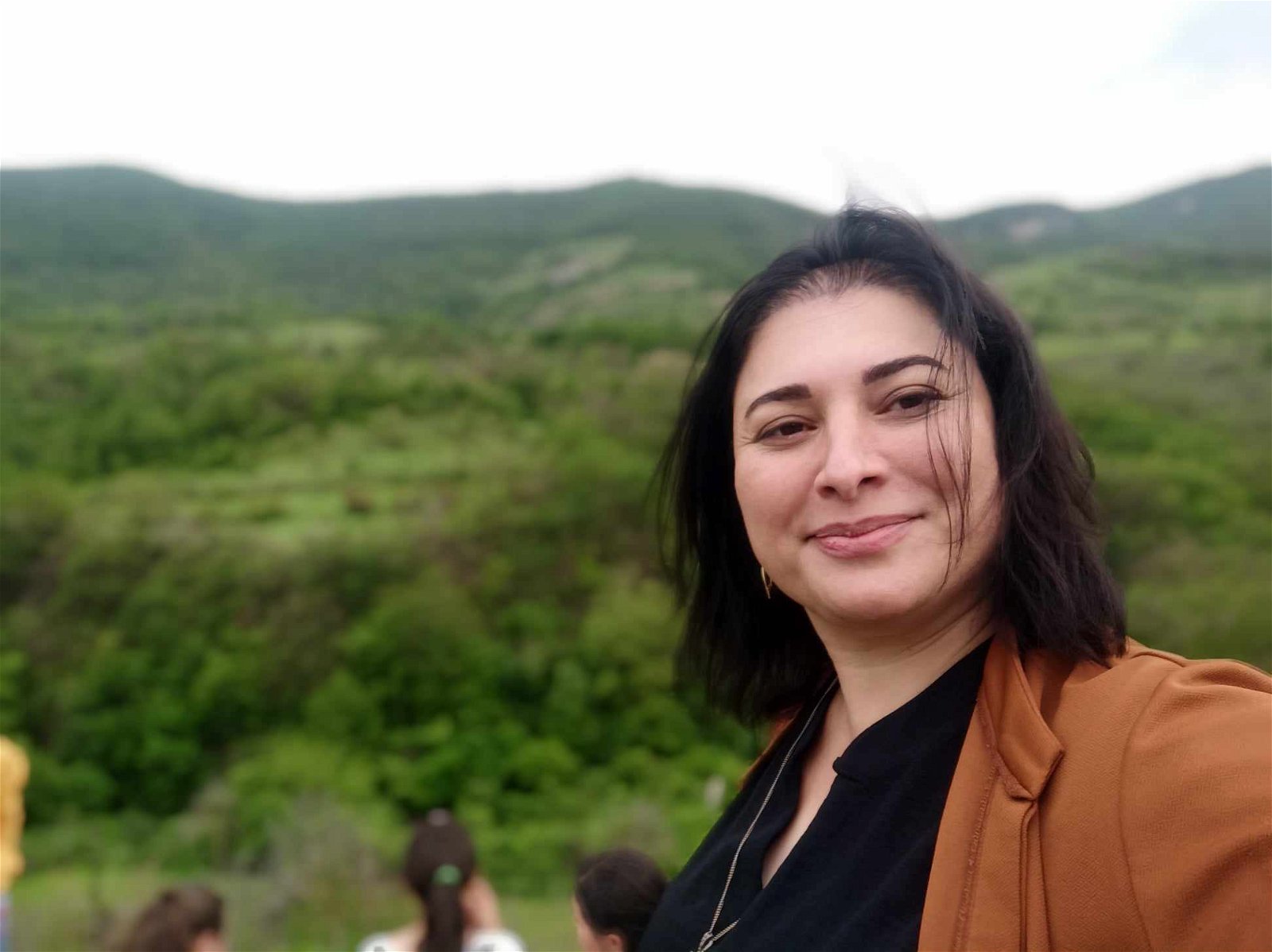
“It is difficult to get to the capital, Yerevan, every day. The new professors understand us well. I am not the only student from Nagorno-Karabakh in our course,” Abrahamyan said, adding that many of her classmates from Artsakh are staying in different provinces across Armenia. “Distance is a problem. That’s why there are classes that we do online,” she said.
This year, Anna Hayriyan will not graduate from Artsakh State University as she had planned, but from Yerevan State University. “After Artsakh State University, I chose Yerevan State University. Their names, roles and meanings are very similar to each other, so I made my choice easily,” Hayriyan said.
“At Artsakh State University, our course consisted of seven future journalists. At Yerevan State University, seven of us are together again,” she added.
21-year-old Hayriyan was in the fourth year of her journalism program when the attack started. She served as a news function for all her relatives, leaving the basement where she and her family were sheltering to find out the news on the Internet and report back.
She drove to Armenia with relatives on September 25, followed by her mother and grandmother on September 26. “We suffered a lot to reach the Hakari bridge,” Hayriyan said, referring to the crossing point between Artsakh and Armenia. “In 18 hours, our car had traveled only 2 kilometers.” Her cousin, Andranik Hakobyan, died at the age of 25 in the disastrous explosion at a fuel warehouse on September 25.
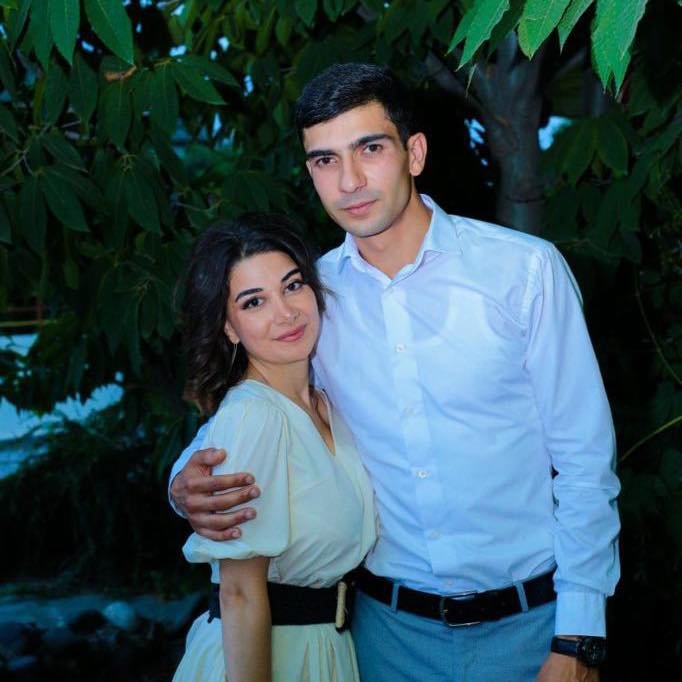
Students note that there are many differences between the programs at their old and new universities, including the credits and the subjects taught. Yet the professors endeavor to make the learning process easy for students from Artsakh. For instance, Hayriyan said that students from Artsakh only had to answer a few questions on an exam, rather than the total eight. Lecturers also offer supplementary reading materials and provide useful links.
Nobody in Hayriyan’s family has found a job in Armenia. Her mother is receiving a pension from the government for serving in the military in Artsakh, and her grandmother is receiving an old age pension. Hayriyan still hasn’t received a scholarship promised by the government to students from Artsakh.
Government support and scholarships
The Armenian government has established a scholarship to cover tuition fees for students from Artsakh. Under the arrangements, students will be awarded a stipend that will be transferred to their educational institution to cover tuition for the 2023-2024 school year. The scholarships range from 400-700 thousand AMD, or about $1,000-1,750 USD.
“In memory of those boys, their bravery, and the hope of restoring Artsakh, we must not allow the university to be dissolved. We have to do everything to ensure justice, and the mother university should be reopened soon.”
“The maximum amount of the scholarship is such that we are sure that we will be able to compensate the students almost completely for their tuition fees. They may not need an additional increase, because realistic scholarship amounts have been chosen,” Zhanna Andreasyan, Minister of Education, Science, Culture, and Sports of Armenia, said during a cabinet meeting on October 10.
Yura Margaryan is using his scholarship to study at the National Polytechnic University of Armenia. The 22-year-old excelled in his studies in the Information Technologies department at Artsakh State University.
“Although the Armenian government has covered our tuition fees, some of my friends studying in departments with higher fees are still awaiting compensation. Additionally, I received an honorary pension [while studying in Artsakh], a benefit that is unfortunately no longer available,” Margaryan said.
Margaryan was the student council vice president at Artsakh State University. He expressed his disapproval of the university’s dissolution. He highlighted the heroic service of Artsakh State University students in the four Artsakh wars, from the 1990s to today. “In memory of those boys, their bravery, and the hope of restoring Artsakh, we must not allow the university to be dissolved. We have to do everything to ensure justice, and the mother university should be reopened soon,” he said.
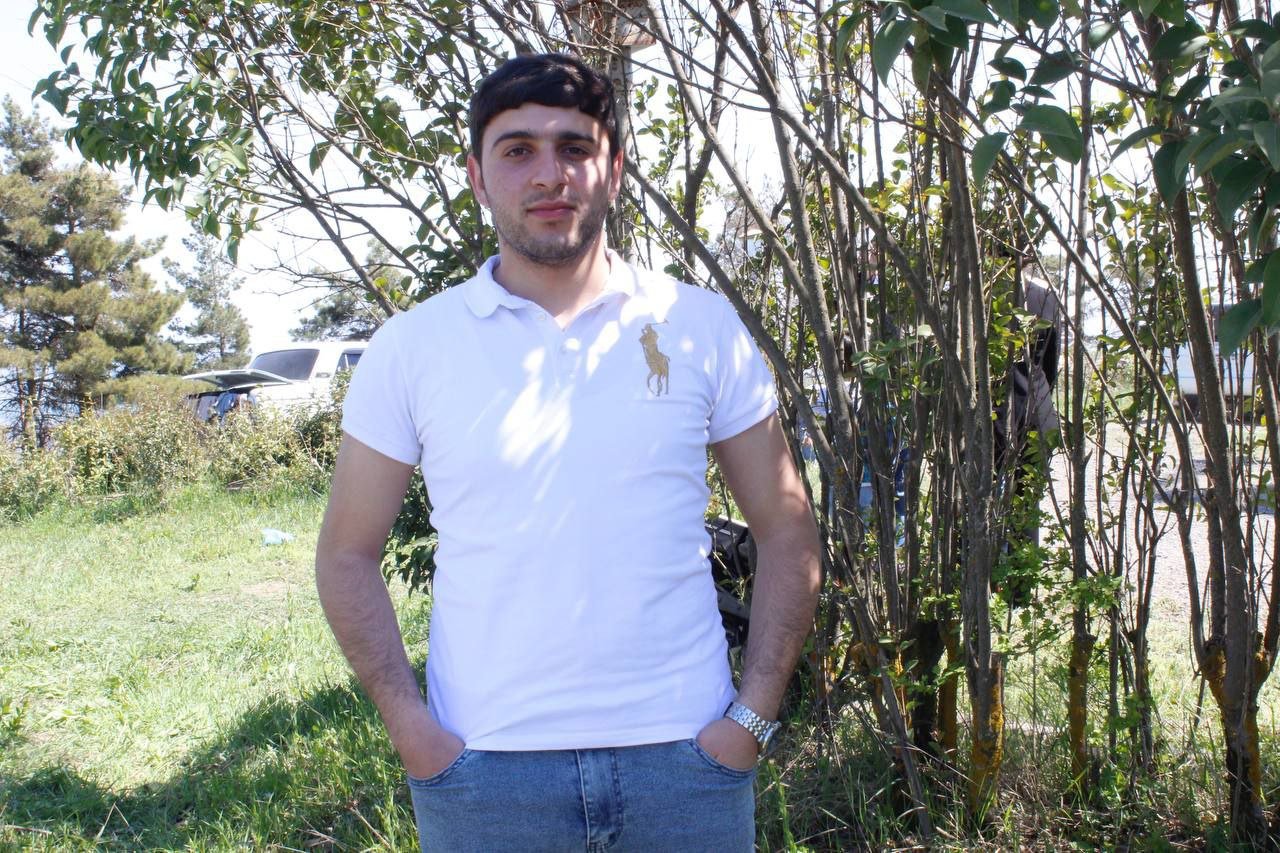
“Artsakh State University is a symbol”
After the depopulation of Artsakh, students and professors have raised concerns about the restoration of state institutions, with a particular focus on Artsakh State University. Students and teaching staff have voiced a public demand to preserve the university.
During the November 8 session of the Standing Committee on Financial, Credit and Budgetary Issues of the Armenian National Assembly, the chairman of the committee, Gevorg Papoyan, announced that expenses for the maintenance of Artsakh’s state institutions were not included in the 2024 budget draft, meaning the institutions would be dissolved.
Lecturers and students from Artsakh, along with several businessmen from Armenia, have demanded the reopening of Artsakh State University in Armenia. Various public and political figures have also expressed their willingness to teach at the university for free upon its reopening.
“Artsakh State University should not be considered solely as an educational institution. It is a symbol. The intelligentsia forcibly displaced from Nagorno-Karabakh, along with the students, should unite around it. The dissolution of the student body and a part of the teaching staff in Armenian universities erodes a national value that is the result of decades of consistent and hard work.”
“Artsakh State University should not be considered solely as an educational institution. It is a symbol. The intelligentsia forcibly displaced from Nagorno-Karabakh, along with the students, should unite around it. The dissolution of the student body and a part of the teaching staff in Armenian universities erodes a national value that is the result of decades of consistent and hard work,” Khachatur Stepanyan, a doctor and professor of Historical Sciences at Khachatur Abovian State Pedagogical University, wrote on his Facebook page.
Suren Parsyan, lecturer at the Armenia State University of Economics, has organized lectures for his former students from Artsakh. Parsyan, a Candidate of Economics and Associate Professor, served as an invited lecturer at the Faculty of Economics of Artsakh State University, where he began his teaching tenure in 2022.
Parsyan provided data indicating that 3,000 students from Artsakh have enrolled at the Armenian State University of Economics, with a teaching staff of 400. Some professors from Artsakh State University have joined its faculty.
Parsyan said that initially, the best option for students and professors was to integrate into universities in Armenia, in order to preserve the right to education and work. “In the future, Artsakh State University will be able to continue its activities as a private university by presenting a program for re-operation. I do not consider the chapter of Artsakh State University to be closed in history,” he said.
Students say that Artsakh State University is not inferior to any university in Armenia in terms of its activities and quality of education. They are confident that one day, Artsakh State University will continue to function in Armenia, and they will resume their education there.

Original Published in the Armenian Weekly.
Anna Harutyunyan
Anna Harutyunyan is a freelance journalist from Yerevan. She is currently studying at the Department of Journalism at the Armenian State Pedagogical University. Anna has successfully completed the one-year educational program at “Hetq Media Factory.”

